 Our World
Our World  Our World
Our World  Pop Culture
Pop Culture 10 Incredible Female Comic Book Artists
 Crime
Crime 10 Terrifying Serial Killers from Centuries Ago
 Technology
Technology 10 Hilariously Over-Engineered Solutions to Simple Problems
 Miscellaneous
Miscellaneous 10 Ironic News Stories Straight out of an Alanis Morissette Song
 Politics
Politics 10 Lesser-Known Far-Right Groups of the 21st Century
 History
History Ten Revealing Facts about Daily Domestic Life in the Old West
 Weird Stuff
Weird Stuff 10 Everyday Products Surprisingly Made by Inmates
 Movies and TV
Movies and TV 10 Actors Dragged out of Retirement for One Key Role
 Creepy
Creepy 10 Lesser-Known Shapeshifter Legends from Around the World
 Our World
Our World 10 Science Facts That Will Change How You Look at the World
 Pop Culture
Pop Culture 10 Incredible Female Comic Book Artists
 Crime
Crime 10 Terrifying Serial Killers from Centuries Ago
Who's Behind Listverse?

Jamie Frater
Head Editor
Jamie founded Listverse due to an insatiable desire to share fascinating, obscure, and bizarre facts. He has been a guest speaker on numerous national radio and television stations and is a five time published author.
More About Us Technology
Technology 10 Hilariously Over-Engineered Solutions to Simple Problems
 Miscellaneous
Miscellaneous 10 Ironic News Stories Straight out of an Alanis Morissette Song
 Politics
Politics 10 Lesser-Known Far-Right Groups of the 21st Century
 History
History Ten Revealing Facts about Daily Domestic Life in the Old West
 Weird Stuff
Weird Stuff 10 Everyday Products Surprisingly Made by Inmates
 Movies and TV
Movies and TV 10 Actors Dragged out of Retirement for One Key Role
 Creepy
Creepy 10 Lesser-Known Shapeshifter Legends from Around the World
10 Disgusting Facts About Cockroaches
The cockroach is one annoying and troublesome insect that we humans still aren’t used to—and probably never will be. This is even though roaches have adapted to hanging around us since forever and seem to be enjoying the relationship.
There are lots of interesting and disgusting facts about roaches that many of us do not know. For example, they are superbugs that can survive for weeks with vital body parts missing, they love our ears, and they can bite us when we stop leaving food for them.
10 They Can Live Without Their Heads For Weeks
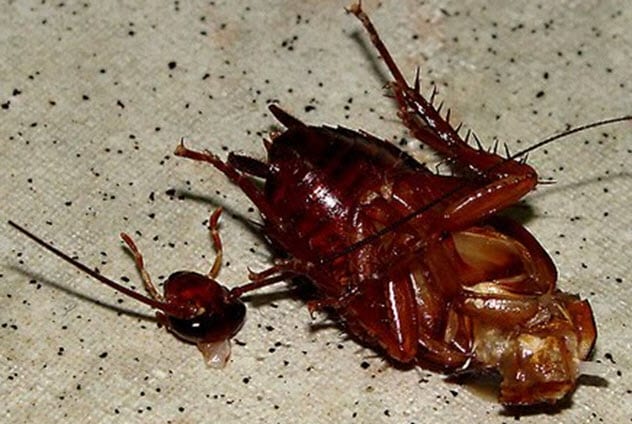
Cockroaches are tough survivors, and getting rid of them is ridiculously difficult. Cutting off a roach’s head does not even count as a death sentence because the pest can survive for weeks without it. The roach only dies later because it doesn’t have a mouth with which to eat or drink.
Cockroaches can live without their heads because they do not use their heads the same way we do. We humans die soon after decapitation because our bodies lose lots of blood and blood pressure. Cockroaches do not have much blood or blood pressure to begin with. So their necks just clot, and they continue roaming around as if nothing happened.
Even if we humans managed to find a way around the massive loss of blood and blood pressure, we would still be finished because the nerves in our bodies need to be connected to our brains to survive. We also need our noses and mouths to breathe.
The bodies of roaches work independently of their tiny brains. They also breathe through small holes on their bodies. All these features allow cockroaches to live for weeks without their heads. They only succumb to hunger and thirst because they have not figured out a way to eat and drink with their skin.[1]
Interestingly, the head of a cockroach remains alive for hours after decapitation as evidenced by its moving antennae. In fact, the head can remain alive for longer if it is refrigerated and given enough nutrients.
9 They Hate Humans Touching Them

According to one common cockroach fact that has been appearing on the Internet, these creatures hate it when humans touch them—so much that they often flee to start cleaning themselves of that disgusting human contact. But it’s not what you think. Cockroaches hate humans or anything else touching them because that simple contact can be dangerous for their existence.
To be clear, cockroaches hate being around humans as much as humans hate being around these disgusting insects. Cockroaches naturally flee from larger creatures—human or not—because they know that any contact with the larger creature will often lead to death.
In fact, contact with almost any organism could leave some residue on the roach that could be detrimental to its survival. In the case of humans, it is the natural oils that we unwittingly leave on anything we touch. That oil could also disrupt how the cockroach’s body works.
Most affected are the antennae. They may seem unremarkable to us, but they are crucial for a cockroach’s survival. They work as the creature’s nose and are required for smelling food and finding potential mates. Those oils will reduce the pest’s ability to smell, which is bad for the roach.[2]
8 They Are Attracted To Our Ears

You might have read about cockroaches getting stuck in people’s ears or even crawling past their ears to reach their skulls. In severe instances, the rogue roach could lay eggs inside the host’s head or could even die there.
It turns out that those stories do not pop up as often as they should. Cockroaches should end up in our ears more often than they already do.
As previously mentioned, cockroaches will often avoid humans. However, they love moving around in the dark, which is also when humans sleep. And it seems like they are not particularly concerned about paying regular visits to the sides of a sleeping human.
The wax in our ears secretes volatile fatty acids—a kind of chemical that is also given off by foods like bread and cheese. Volatile fatty acids attract roaches to their source. If that is our ear, the roach quickly realizes that the human ear is tight, stuffy, and warm, which is how they love their homes.
And what sort of creature rejects a free home with free food?
Unfortunately, this quickly becomes a problem for the cockroach and the sleeping human. Movements in the tight ear could cause the sleeping human to subconsciously scratch his ear. This pushes the roach deeper into the ear or even kills it if enough pressure is applied. Either situation is bad for the ear and its owner.
A living roach may end up deep inside the ear or even inside the skull. The spines on the roach’s legs could damage the inner ear, causing an infection or even hearing loss if the eardrum is affected.[3]
A dead roach is also a problem, and a squashed roach is an even bigger worry. The insides of cockroaches contain deadly bacteria that could cause some nasty health problems.
7 They Can Bite Humans
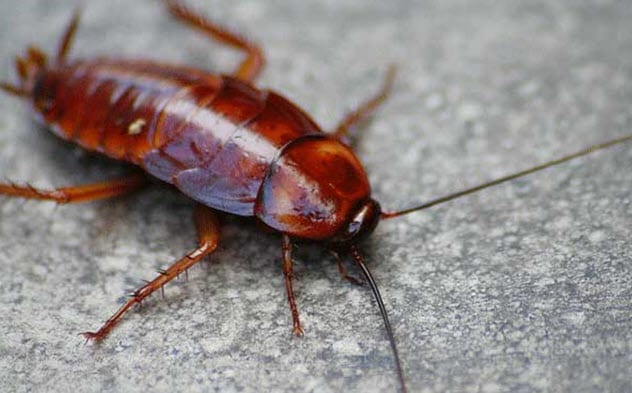
Cockroaches are omnivores because they eat both plants and animals. They actually eat anything, even if it is a living human. Yes! Roaches can bite humans. (A quick confession: I have been bitten once. The sting-like bite was so painful that it woke me from sleep.)
To be clear, cockroaches do not always seek humans to bite. They usually prefer other sources of food. They will not bite when attacked by a human, either. Instead, they usually try to run.
However, they may start to bite humans and even pets when there are so many other roaches around that there is not enough food for everyone. But even in this situation, they will still try to avoid chomping on humans. Most bites happen when the roach finds small food particles hanging off the body of a sleeping human.
These grubs are usually found around the fingers, hands, and legs—the areas where most bites happen. The bites can be painful and have been compared to getting zapped by a giant roach-sized mosquito. Treatment is usually advised after a bite because the roach could introduce bacteria into the body.[4]
6 They Used To Like Sugar But Now Hate It
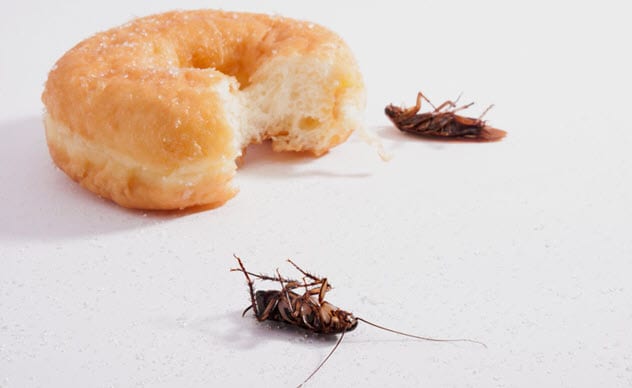
Cockroaches love sugar. They will give you a thumbs up if you leave candy, cakes, fruits, and juice with high sugar content lying uncovered around your home. Leave raw sugar lying around, and they will love you forever.
Pest control businesses discovered this in the 1980s. They observed that sprinkling sugar in a location would leave roaches milling around in no time. The businesses used that to their advantage and started to bait roaches with glucose laced with insecticide. The meal killed the roaches when they returned to their homes.
Other roaches often ate the remains of the dead, which is not surprising because these creatures will eat almost anything. The scavenging roaches also died as the bodies of the dead roaches still contained the poison. This went on for some time until cockroaches learned that sugar was killing them.[5]
Cockroaches later began to resist this sugar. Their senses quickly adjusted to detect sweet sugar as bitter. Many pest control businesses discovered that, too, and replaced the glucose with fructose, a different sugar. The roaches quickly caught on and started avoiding fructose as well.
Scientists traced this surprising switch to millions of years ago when roaches first developed the ability to detect sweet but poisonous parts of certain plants they ate as bitter. That skill was genetically suppressed when they started to live around humans and only returned when humans started to poison their food.
5 Termites Are Cockroaches

Termites and cockroaches belong to the same order, Blattodea. So termites are technically cockroaches. Interestingly, termites were not considered cockroaches until 2018. Before then, termites belonged to the order Isoptera.
Studies into the similarities between both creatures began in 1934 when researchers observed that their guts contained similar microbes. A research paper published in 2007 finally confirmed that they were relatives and recommended that the taxonomic rank be adjusted to put them under the same family.
Actually, the paper suggested that the orders Blattodea (for cockroaches) and Isoptera (for termites) should be considered subfamilies under a new family called Termitidae.
Several scientists with the Entomological Society of America (ESA) refused this suggestion at the time because they did not want termites to be considered cockroaches. Besides, another Termitidae family already existed in the taxonomic rank and could cause confusion with the new suggested Termitidae family.
The ESA later backtracked and agreed to categorize termites as cockroaches after putting it to a vote in 2018. ESA reclassified the termite order Isoptera as a suborder and placed it under the cockroach Blattodea order instead of creating a new family as the 2007 paper suggested.
That does not mean you should call termites “cockroaches,” though. Termites should be called “termites” and cockroaches, “cockroaches.” Remember that saying about knowing a tomato is a fruit but not putting it in a fruit salad? A similar idea applies here, too. “Knowledge is knowing that a termite is a cockroach. Wisdom is not calling it a cockroach.”[6]
4 They Can Change Gears When Running
Anyone who has ever tried to kill a roach has realized that they are very fast for their size. Well, it seems like we should not be surprised because some cockroaches can change their speeds.
Scientists have likened this to how horses go from trotting to galloping or how cars change gears to increase their speeds. Cockroaches do not change gears like motorcars because their scientists have not invented roachmobiles yet. Instead, they shift gears by changing the position of their legs as they run.
To be clear, scientists had only observed this in the 2017 study in the Nauphoeta cinerea cockroach. Like most other roaches, it flees when it detects a bigger creature around. The roach runs with its middle leg on one side of the body and the front and hind legs on the other side of the body touching the ground at the same moment. This is called the alternating tripodal gait.
However, the alternating tripodal gait is not fast enough, uses lots of energy, and makes the fleeing roach unbalanced. So the roach starts to use the metachronal gait pattern, which does not have these problems. This time, all legs on one side are lifted off the ground—from the front legs to the middle and the hind legs. They touch the ground in that same order.[7]
3 Their Brains Could Be Used To Make Lifesaving Drugs

Here is a disgusting fact that could change medicine forever. Scientists are working on creating drugs that could cure E. coli and MRSA (methicillin-resistant Staphylococcus aureus)—two deadly antibiotic-resistant bacteria—using chemicals extracted from the brains of cockroaches.
Researchers discovered that tissues from the brains of cockroaches killed these bacteria when they started to investigate how some locusts thrived in filthy environments in the Middle East. Cockroaches got involved when researchers decided to find out how these creatures survived in sewage and drainage areas without dying of the terrible bacteria that thrive there.
The researchers discovered that the nerves of locusts and the brains of cockroaches and locusts contained chemicals that killed these dangerous bacteria. Researchers have not confirmed the exact chemicals that do the work. They are still trying to uncover the answer and hope to use it to develop antibacterial drugs in the future.[8]
2 They Can Make Group Decisions
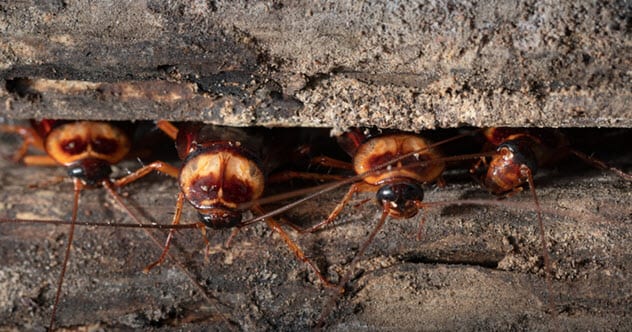
Cockroaches are smarter than we think. They can even make decisions in groups, just like many other insects and animals.
Several years back, Dr. Jose Halloy of the Free University of Brussels, Belgium, conducted a study to observe how roaches think. He put several of them inside a dish with three homes and waited to see how they would divide themselves.
Dr. Halloy observed that the roaches first came together, touching each other with their antennae. After some time, they divided themselves into the homes equally. For example, 50 roaches split into two groups of 25 each when they were given three homes with a capacity for 40 roaches each.
One group lived in the first home, and the other group lived in the second. The third home was abandoned. All 50 roaches also opted to live in a single home when they were given three homes that could accommodate over 50 roaches each.[9]
1 The Ecosystem Would Be Destroyed If They Go Extinct
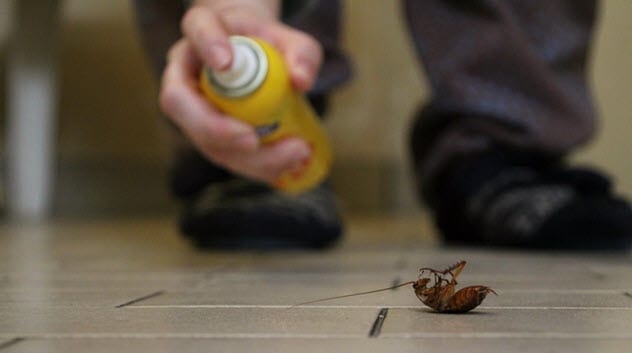
Cockroaches might be hated, but they are crucial for a balanced ecosystem. Our ecosystem would suffer a serious disruption if they ever go extinct.
First, the extinction of roaches would have a direct effect on the populations of the many species of birds, rats, and mice that consider cockroaches as a source of food. These other animals would not die off completely because they usually feed on other organisms and sometimes plants, too. But their numbers would plummet.
In turn, the diminished populations of these animals would reduce the number of cats, wolves, coyotes, eagles, reptiles, and several other creatures that consider birds, rats, and mice as food. And it goes on like that. The hardest hit would be some species of wasps that depend on cockroaches to maintain their life cycles. These wasps would go extinct because cockroaches did.
The forests would also suffer if cockroaches go extinct because these pests feed on decaying matter, which often contains lots of nitrogen. The cockroaches eat this nitrogen with the decaying matter and then excrete it. Their nitrogen-rich poop is later absorbed by the soil, which uses it to support the growth of plants.[10]
A lack of roaches will deprive the dirt of nitrogen. This means that the soil will be unable to support the growth of enough plants, which will affect the populations of creatures that feed on these plants and the predators of those creatures. This continues until it reaches the top of the food chain. So, folks, we just have to tolerate roaches.
Read more disgusting facts about cockroaches on 10 Filthy Facts About Cockroaches and 10 Fascinating Talking Points About Cockroaches.


![Top 10 Disgusting Foods The Chinese Eat [DISTURBING] Top 10 Disgusting Foods The Chinese Eat [DISTURBING]](https://listverse.com/wp-content/uploads/2020/03/23773182-0-image-a-46_1580303417295-150x150.jpg)





